Tarapoto is the largest town in the province of San Martin. It has a population of 150,000 inhabitants and is situated in the high jungle in the north of Peru.

Location and Attractions
The “Laguna El Sauce” is perhaps the most popular destination for tourists. This lake is now more commonly named “La Laguna Azul” (Blue Lagoon) after the shooting there of the film, Blue Lagoon with Brooke Shields some years ago.

The area is also well-known for its beautiful jungle landscapes and its many impressive waterfalls.



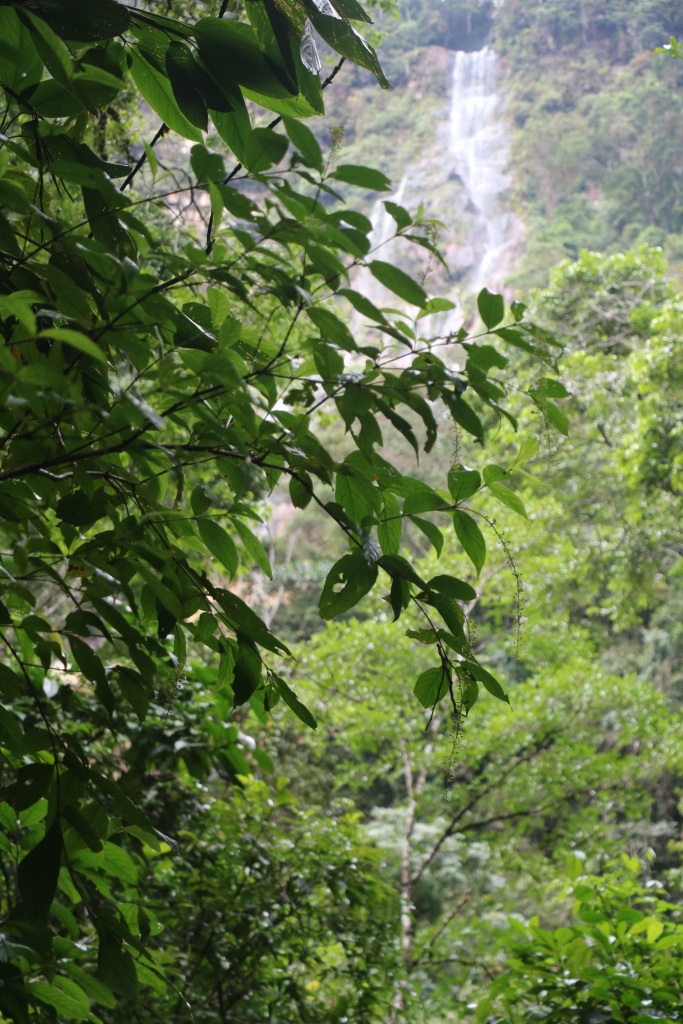

However, in this post I am going to concentrate on the small villages surrounding Tarapoto, and the people who make their living in this wonderful area of Peru.
Tarapoto, the Town
The first impression one gets of Tarapoto is that of racing moto-taxis, like buzzing bees, flying in hoards down the narrow streets. Cars are few, as the moto-taxi is the ideal way of quickly getting round the town and the surrounding districts. There is one waiting at every corner.

Within the town a moto-taxi ride cost 3 Soles, about US$ 0.50. However, many people own a motor-bike, or their own moto-taxi which is then known as a moto-car.

There are a few larger supermarkets, and a multiscreen cinema. As well, there are a number of very attractive restaurants serving delicious local dishes. However, many building and shops around the central area of town are like little square boxes with their fronts wide open for business.
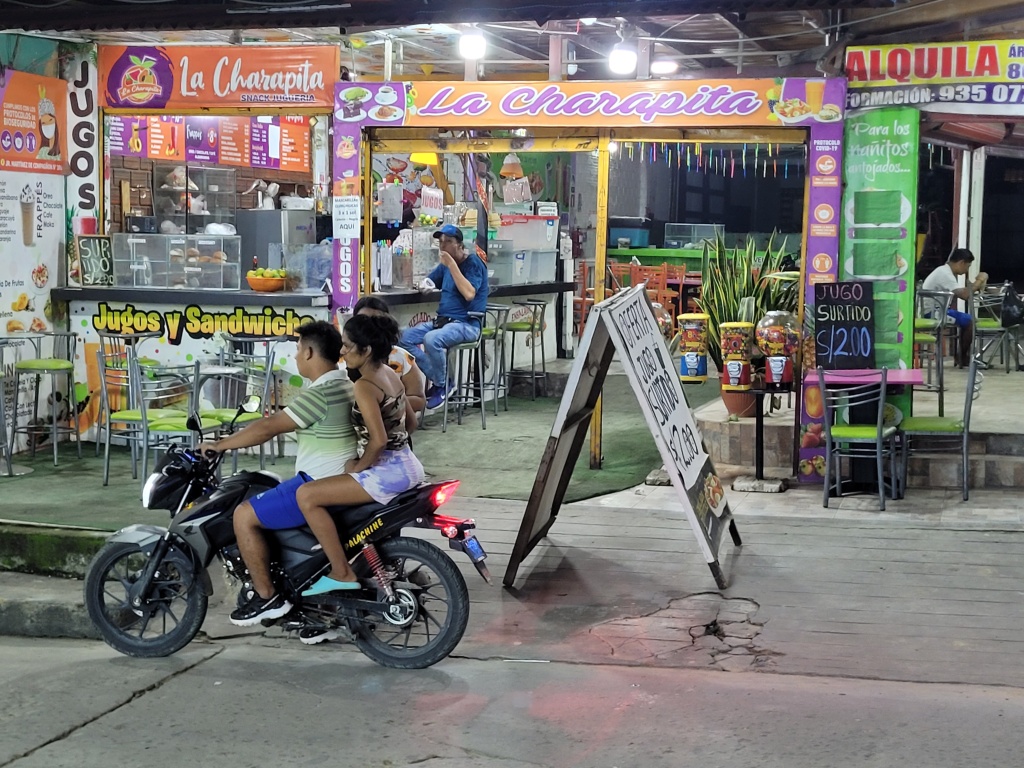
Indeed with the jungle climate a lot of shopping and purchases are made in these open front shops or in the street itself.
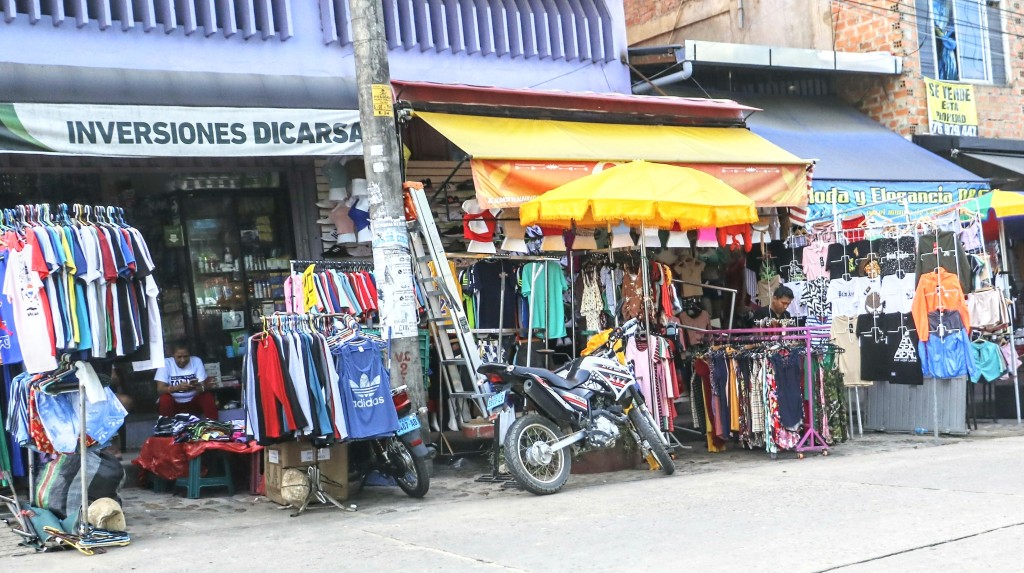
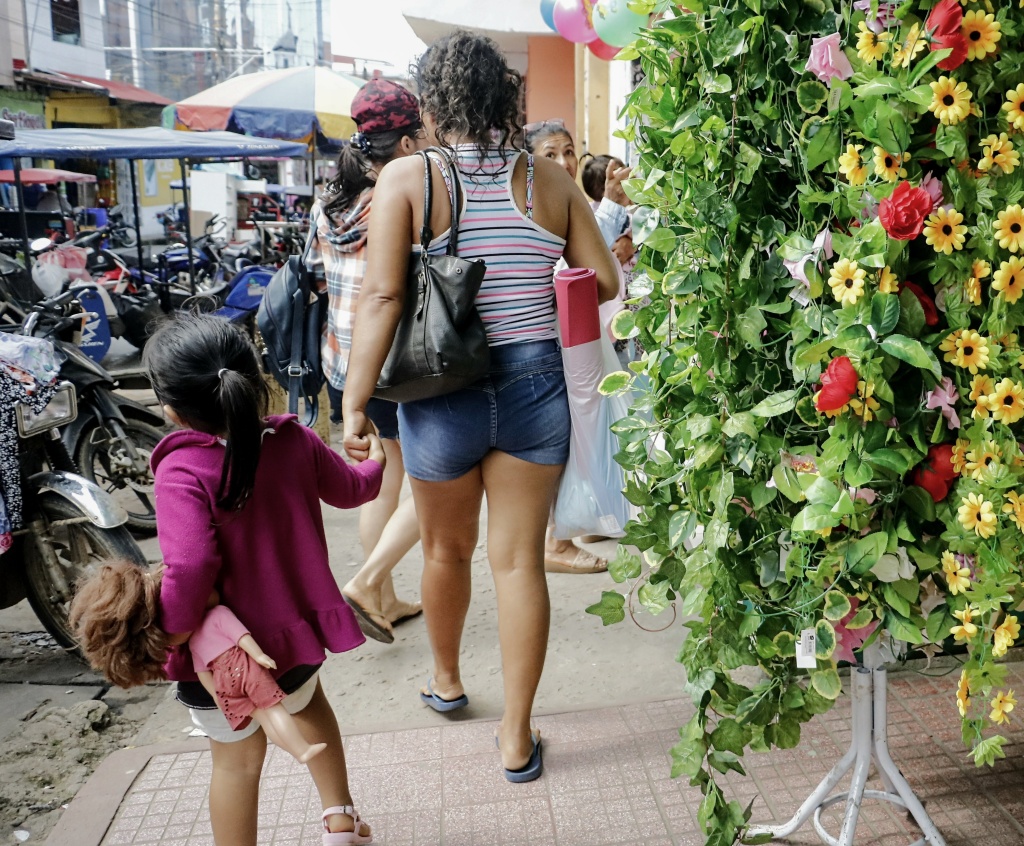
The market is a great example of how commerce and transport (moto- taxis) blend into one.

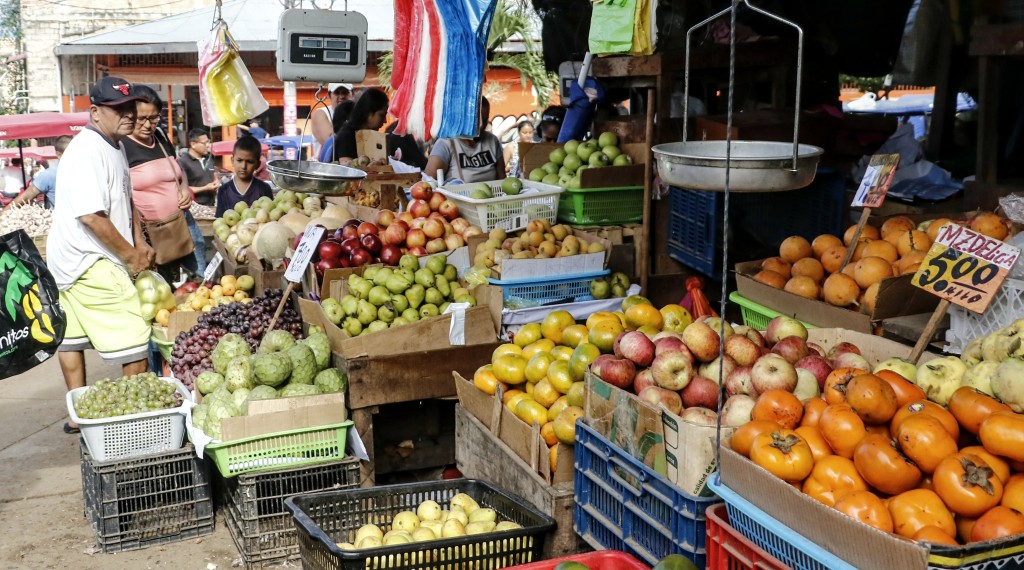
Click to see photos full size and scroll to view other images in each gallery.




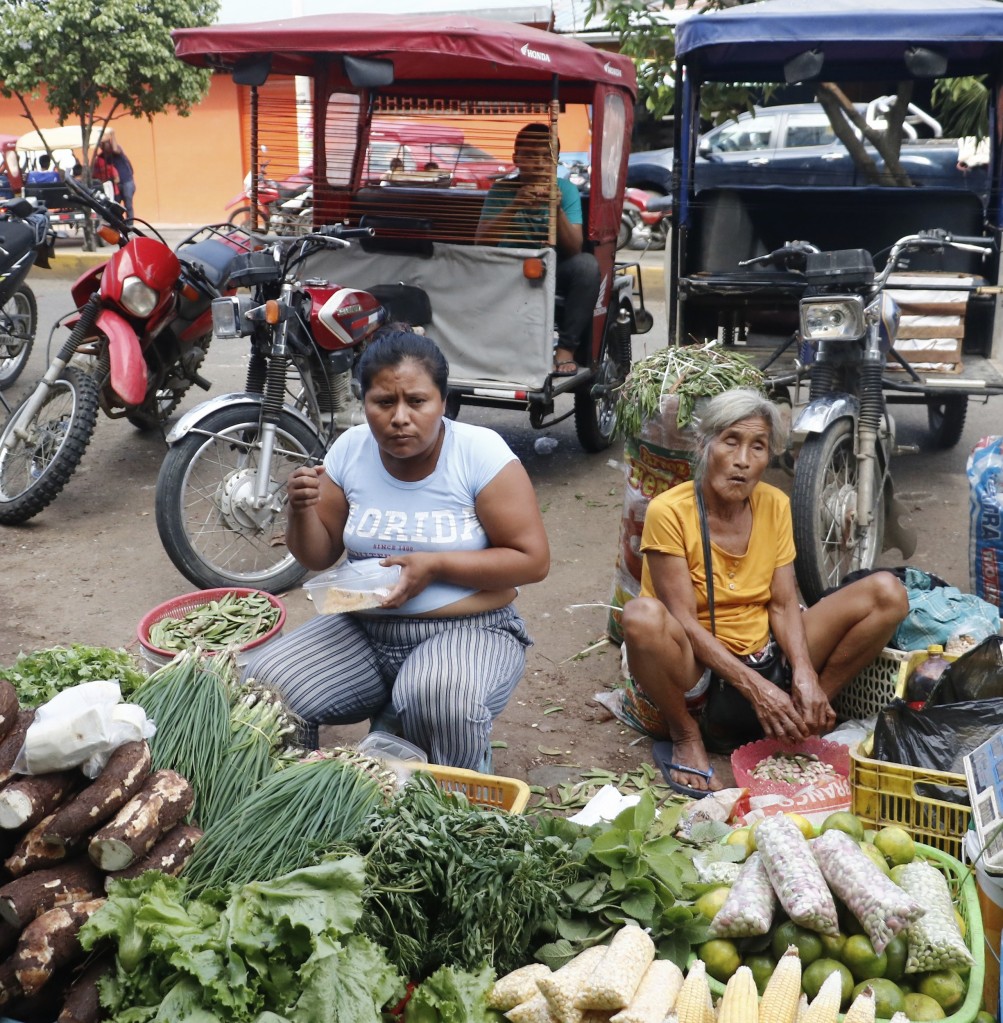




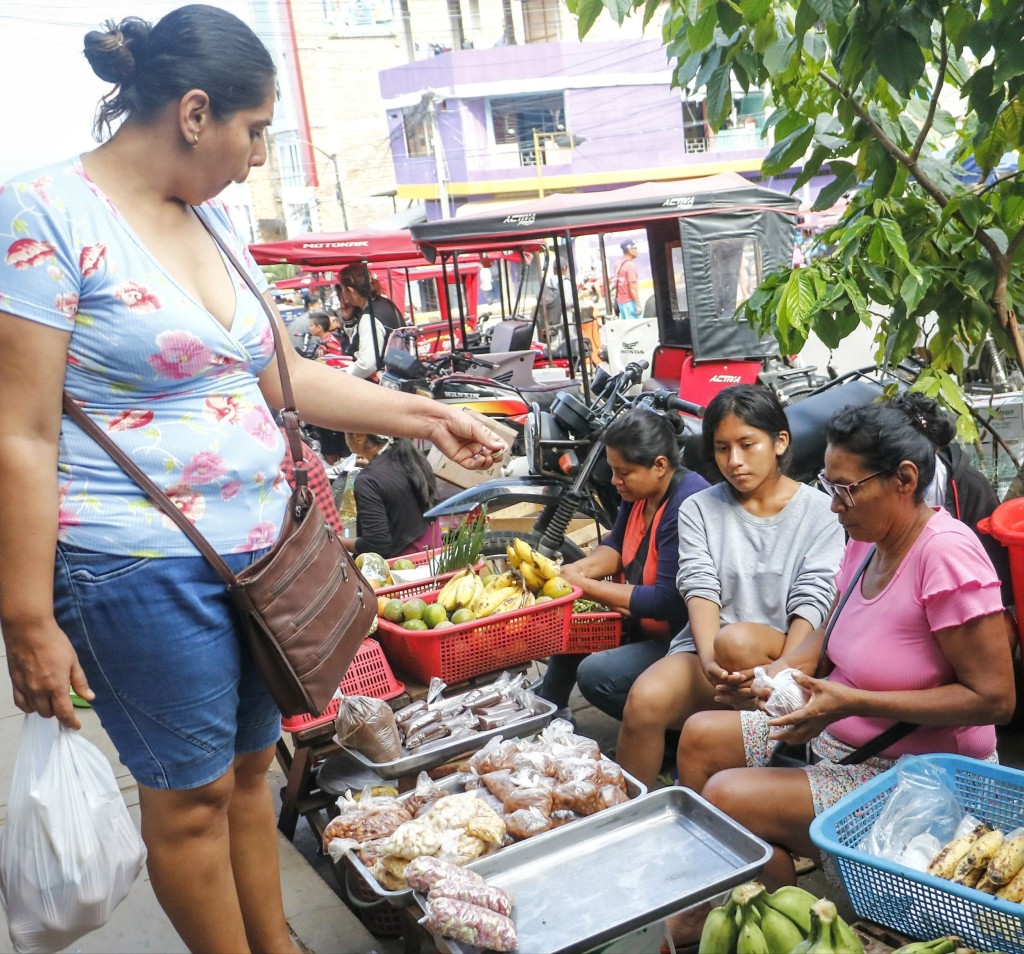
The main square, the “Plaza de Armas” with its modern fountain, comes to life in the evening and is a peaceful place to sit and spend an evening, watching people hanging out while the street-venders wander too and fro selling their wares.

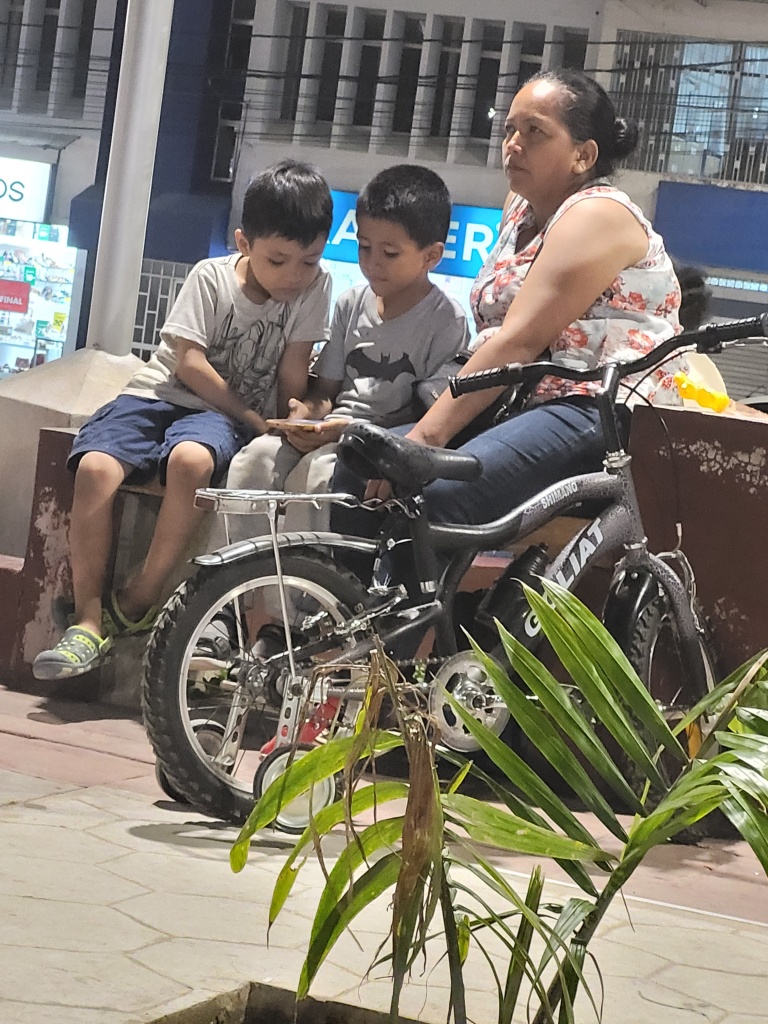


The photographer poises ready for customers, mostly courting couples and families with small children. For ten soles he will take a picture with his trusty Canon and print it for you there and then with his portable printer.

The bubble blower delights the children and makes promising sales of her bubble-making wands and soap-mix.

One evening there was community cinema in the square. Yet another international film had been made in Tarapoto, one of the “Transformer” films, and the local population were eager to see some previews.
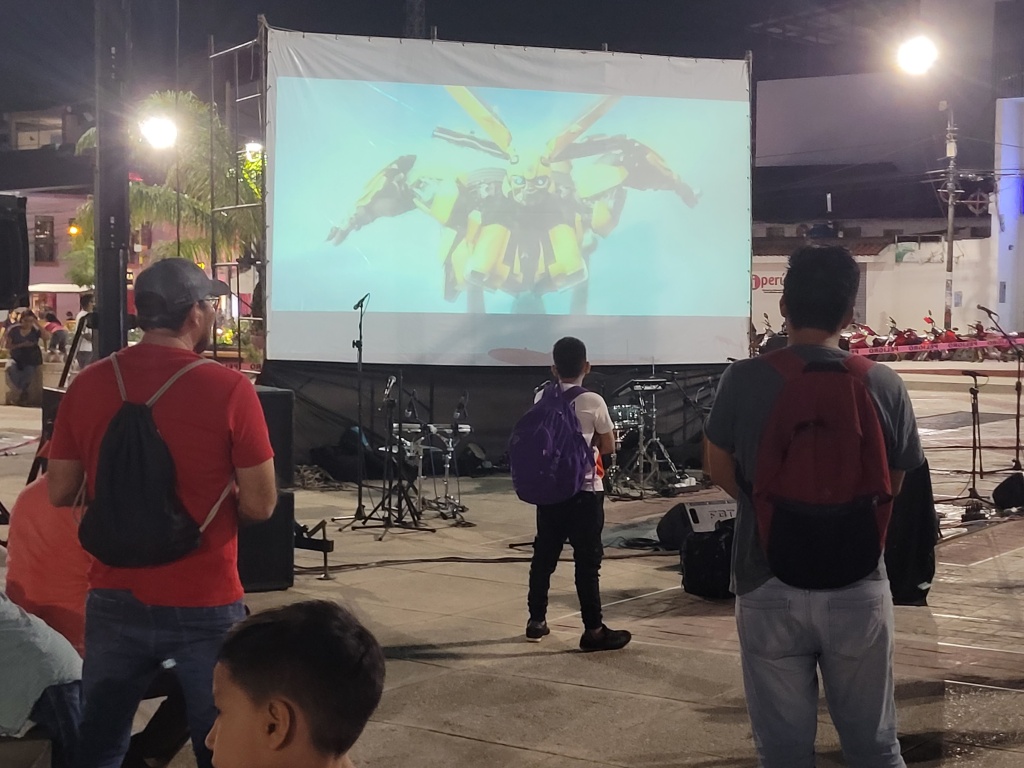
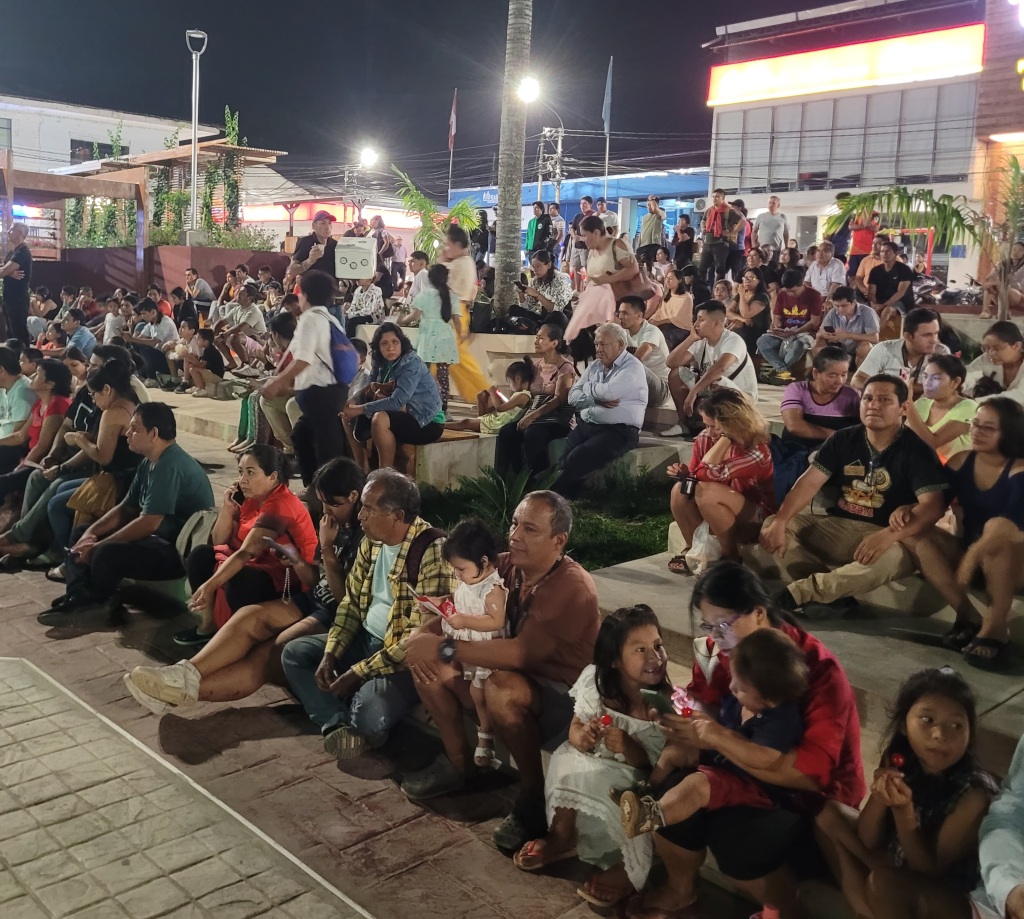
On the Road
In the spirit of local transport, I hired Luis Alberto and his moto-taxi, for my journeys to the villages surrounding Tarapoto.
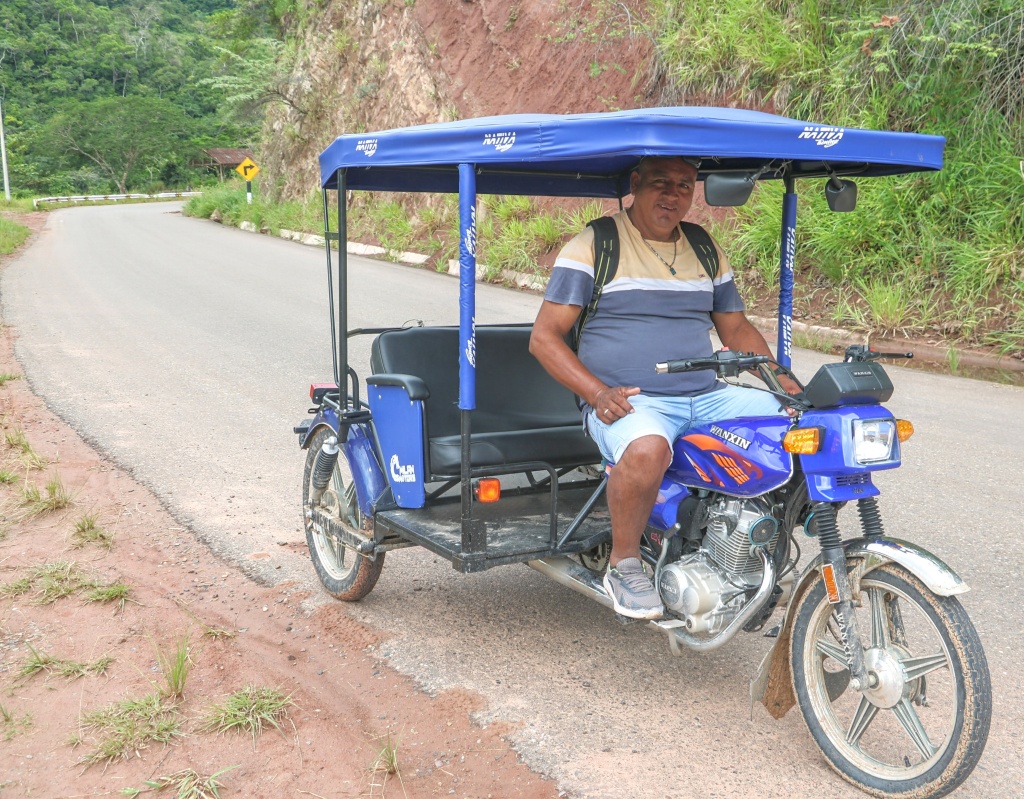
I loved feeling the wind on my face as we drove along. However, with some of the unpaved roads I admit to having had a very “numb bum” by the end of each day.
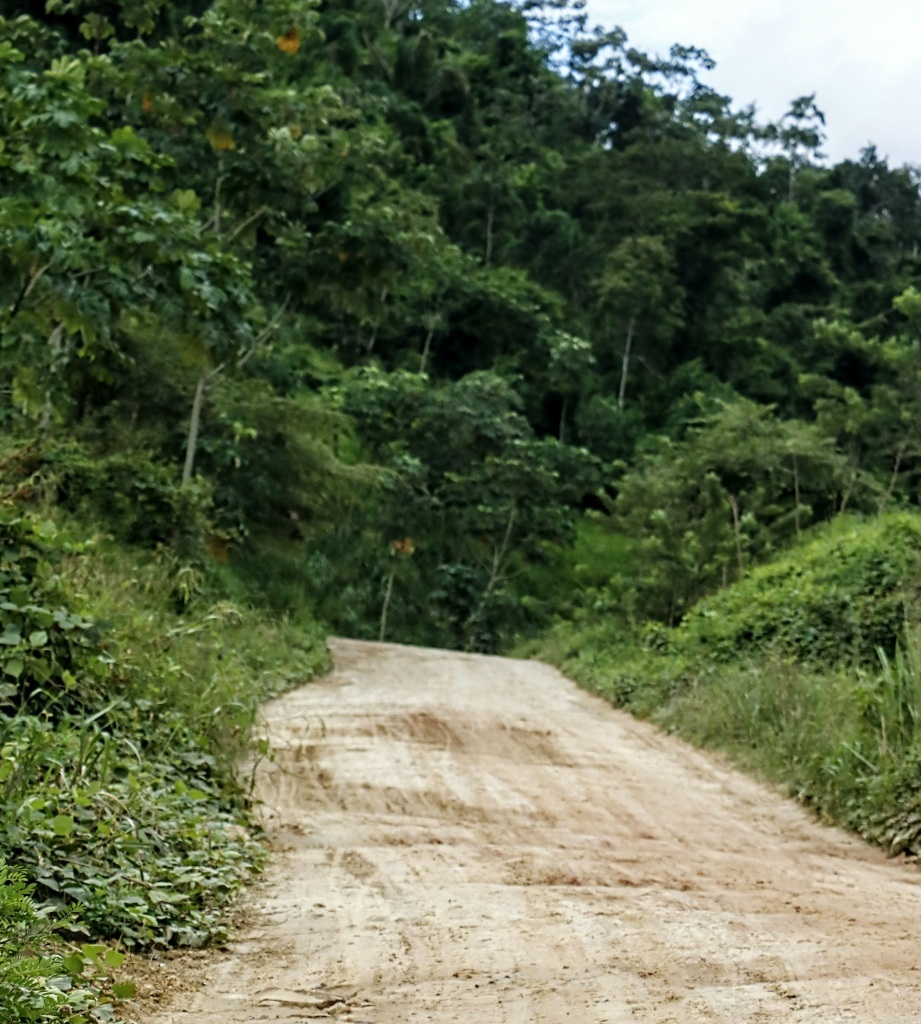
Lamas- Working out where to go?
The first visit outside of Tarapoto was to nearby “Lamas”, a small picturesque village to the north.
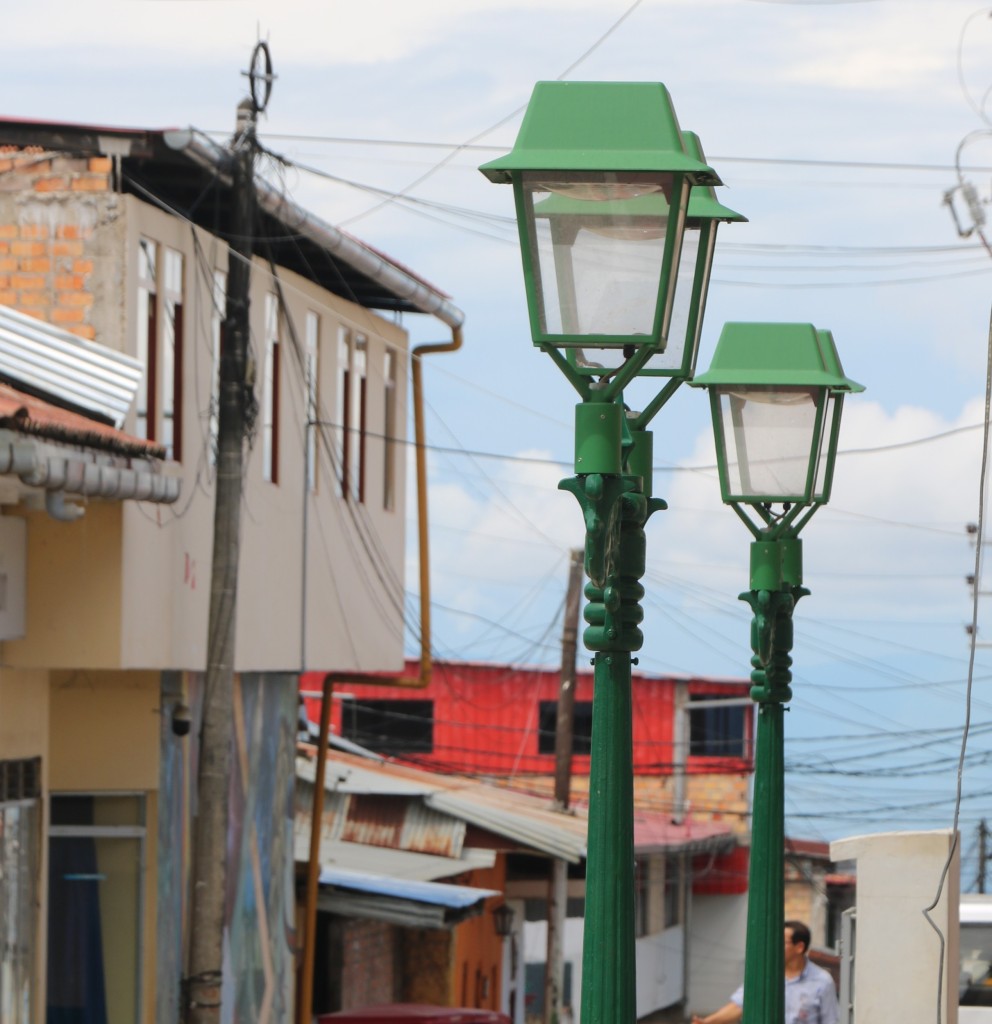
There, sitting on a park bench I met Jaime Chung, who was responsible, some years ago, for designing the town square.
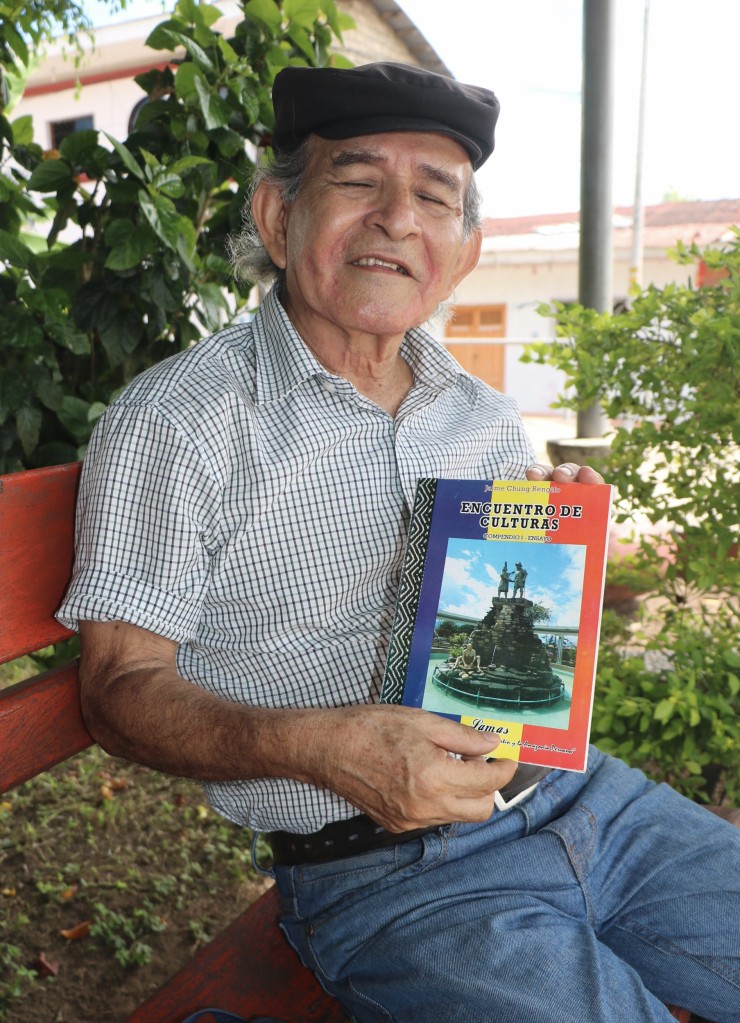
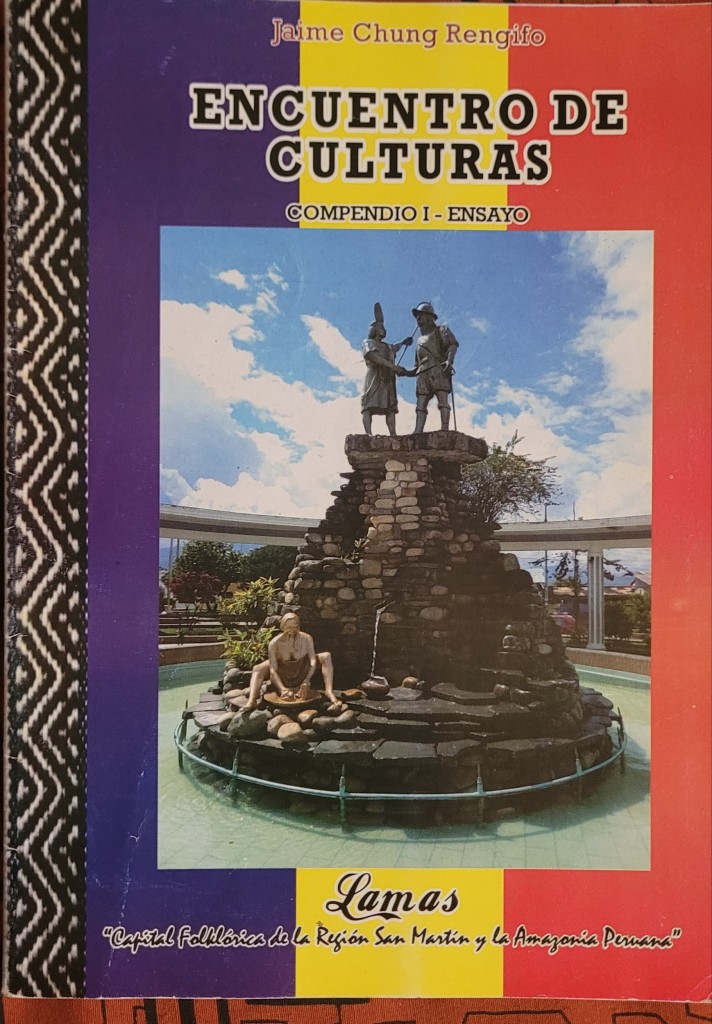

Since then, he has been fighting to ensure that the traditional feel of the village can be maintained and protected from the building of unattractive new constructions that have become much the norm in the town of Tarapoto itself.

He seems to have done a very good job, but he emphasises that this hasn’t been easy.

Walking towards the indiginous community of Wayku, I met Marcilino, who talked about his chacra where he grew bananas, maize, manioc, as well as some coffee and cacao.

Marcilino made a video dedication for me in his native Quechua language.
These conversations were very useful and helped me to form my ideas of where to go and what to find during the following days.
Small Villages and Great People
So, based on the information from my conversations I decided with Luis Alberto to go further afield following the rivers Mayo and Huallaga to the village of Chazuta and then doubling back to the villages of San Pedro, San Roque and San Antonio, with well, maybe a waterfall on the way. That would keep me busy for quite a few days.

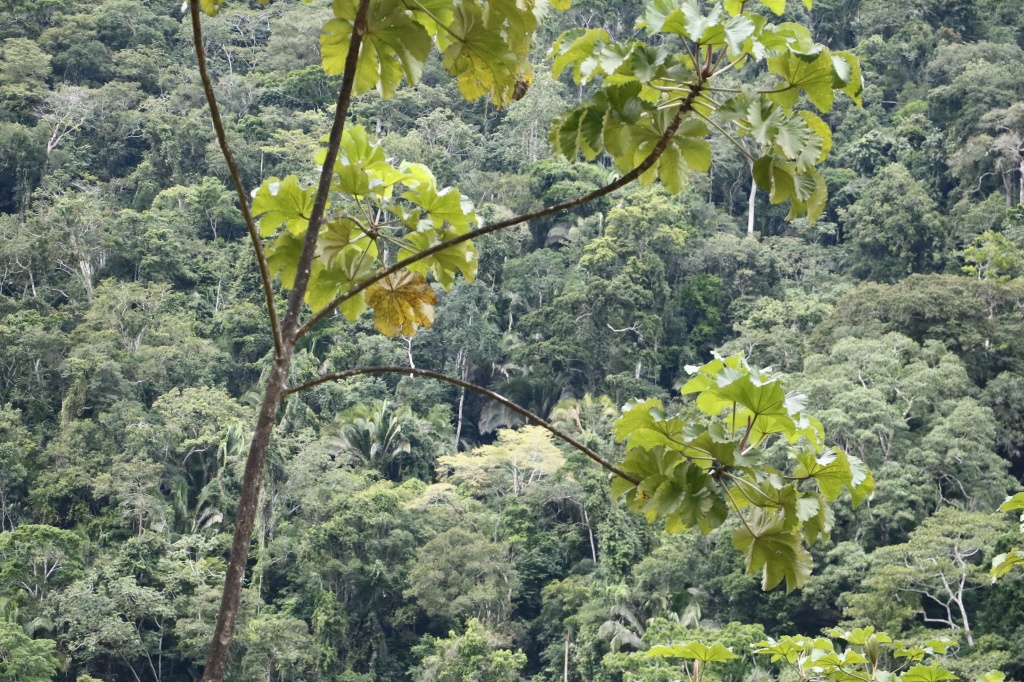
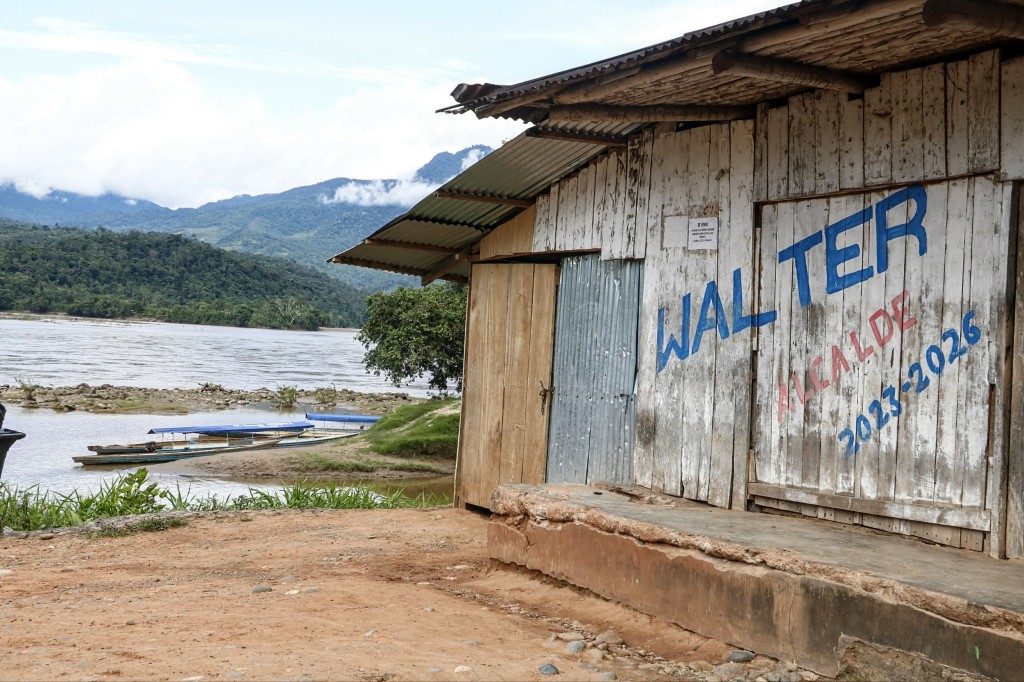
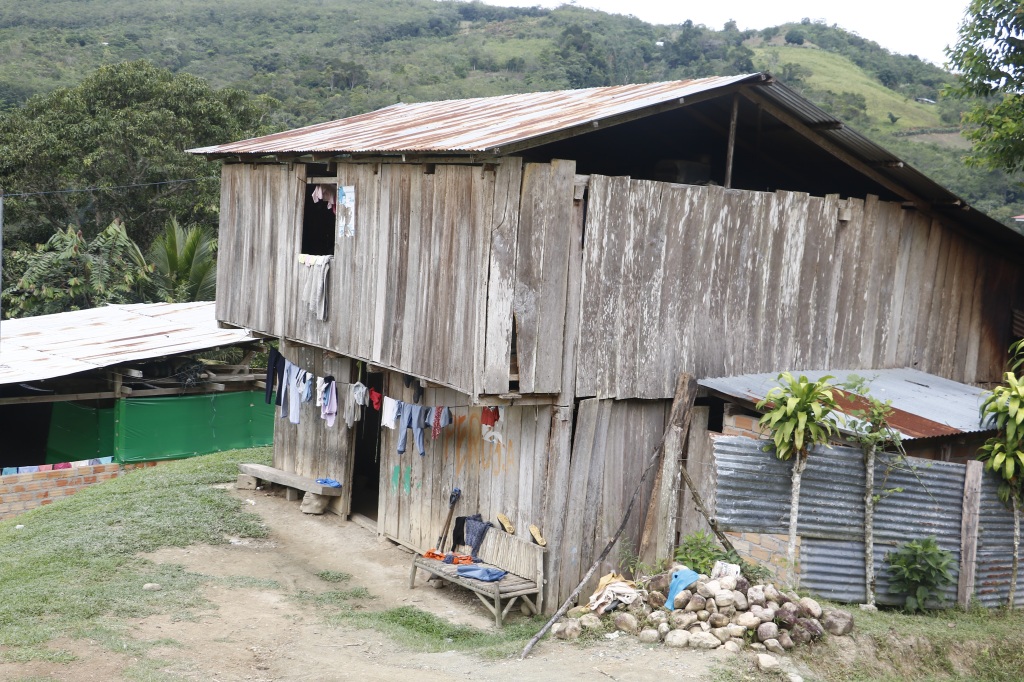

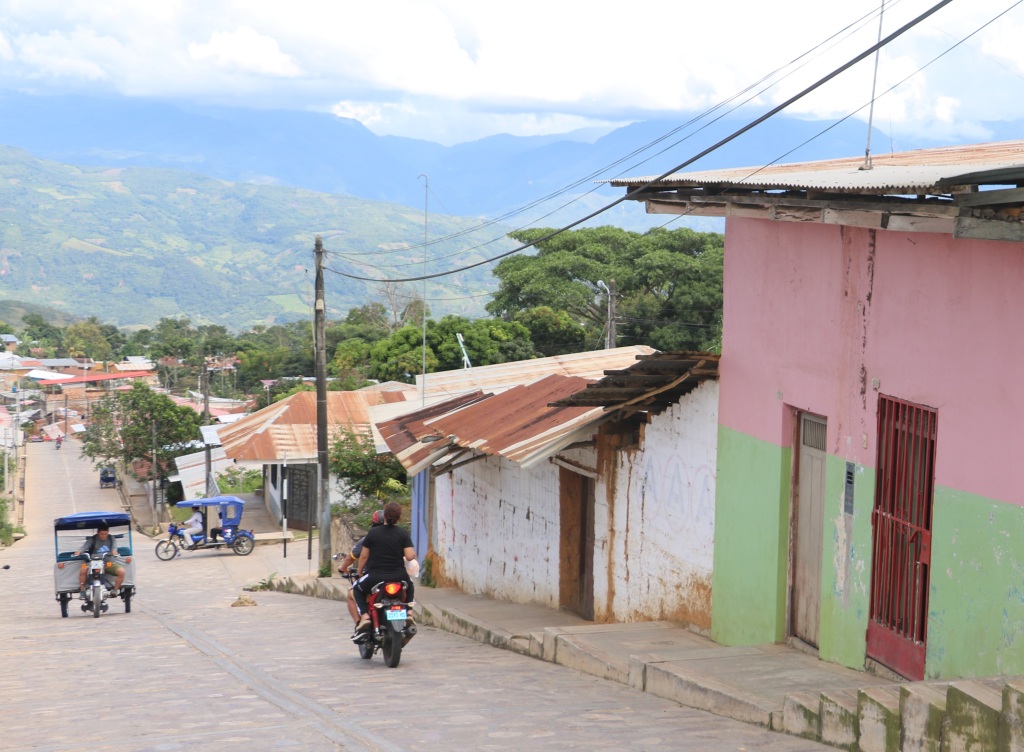



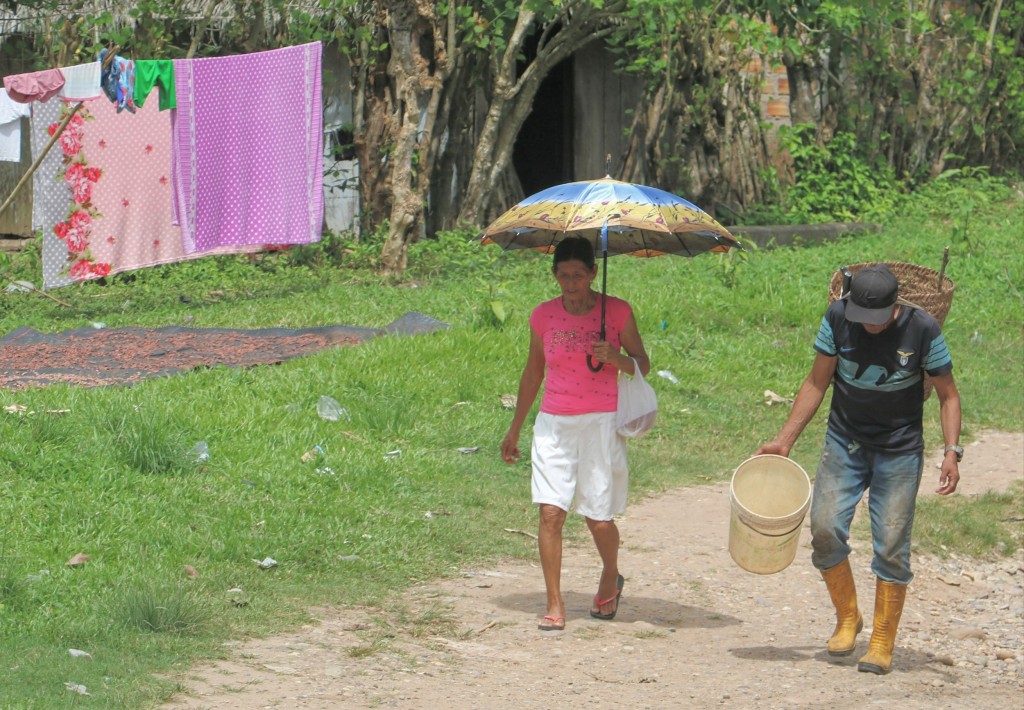

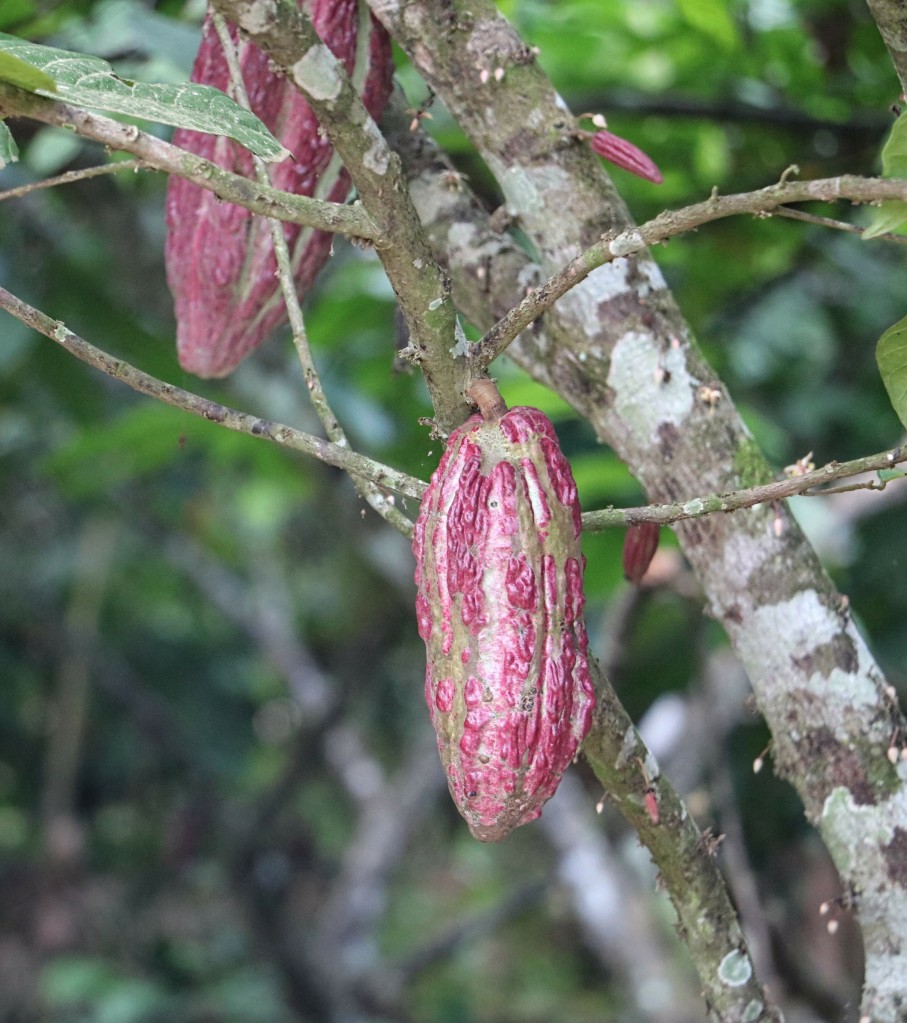
In the villages visited, the houses were very dark inside but the doors were always open. Often the inhabitants would be sitting outside by the doorway



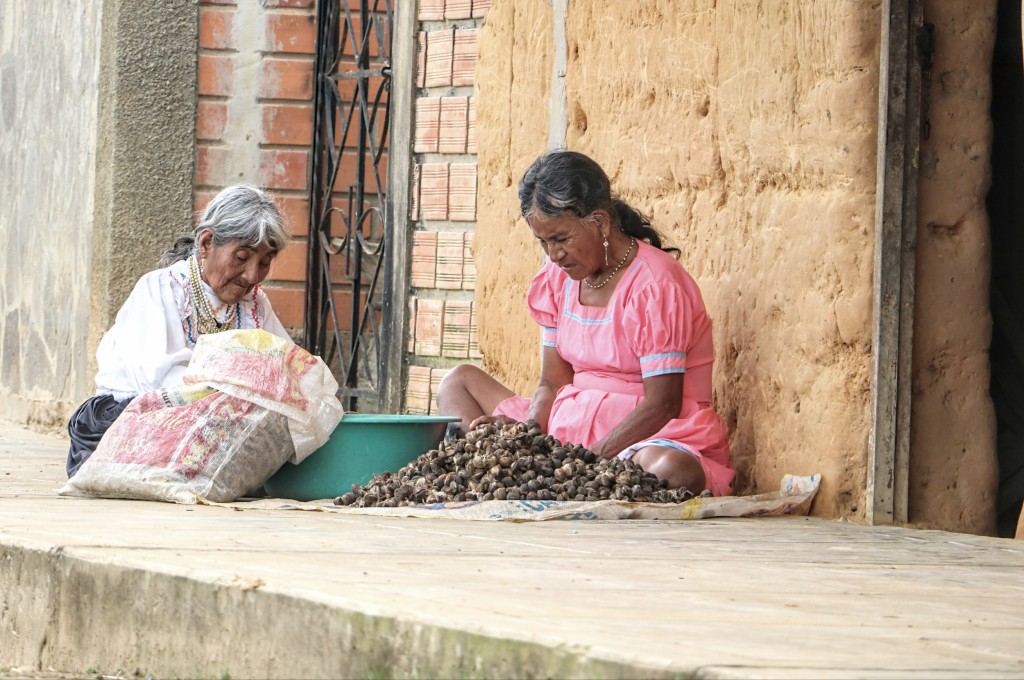



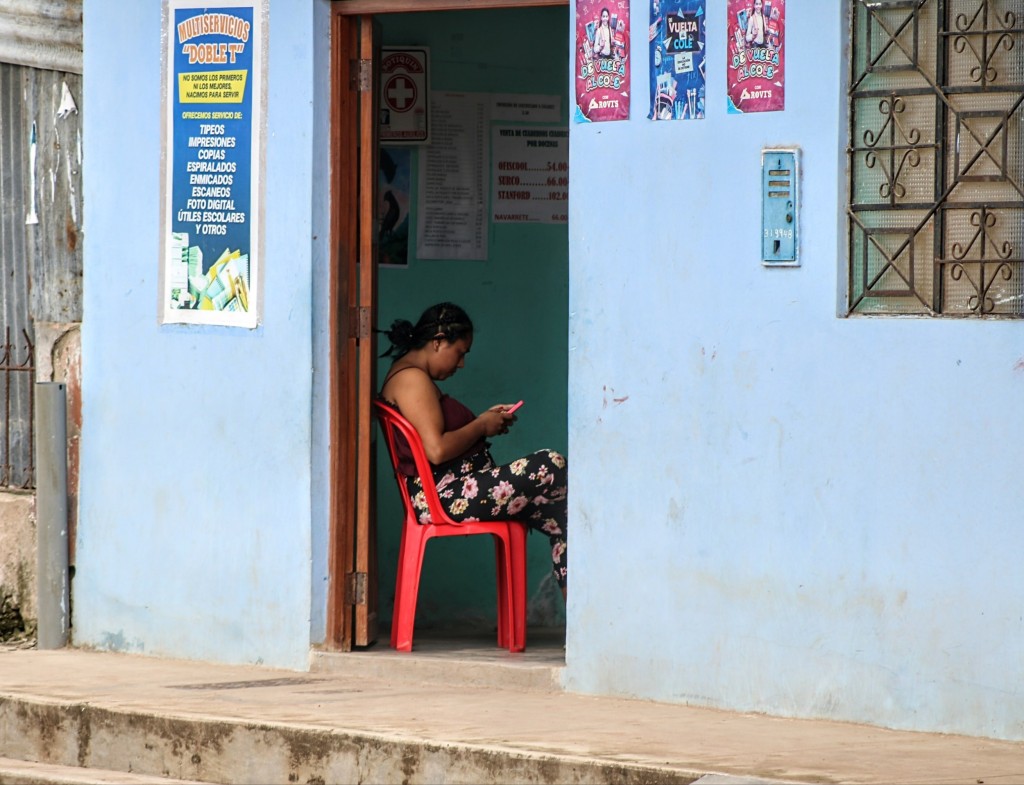




Each village had a number of small shops, mostly selling basic products. Many had produce for sale on tables outside of their front doors.. For larger articles, it was necessary to go into the big town, Tarapoto.







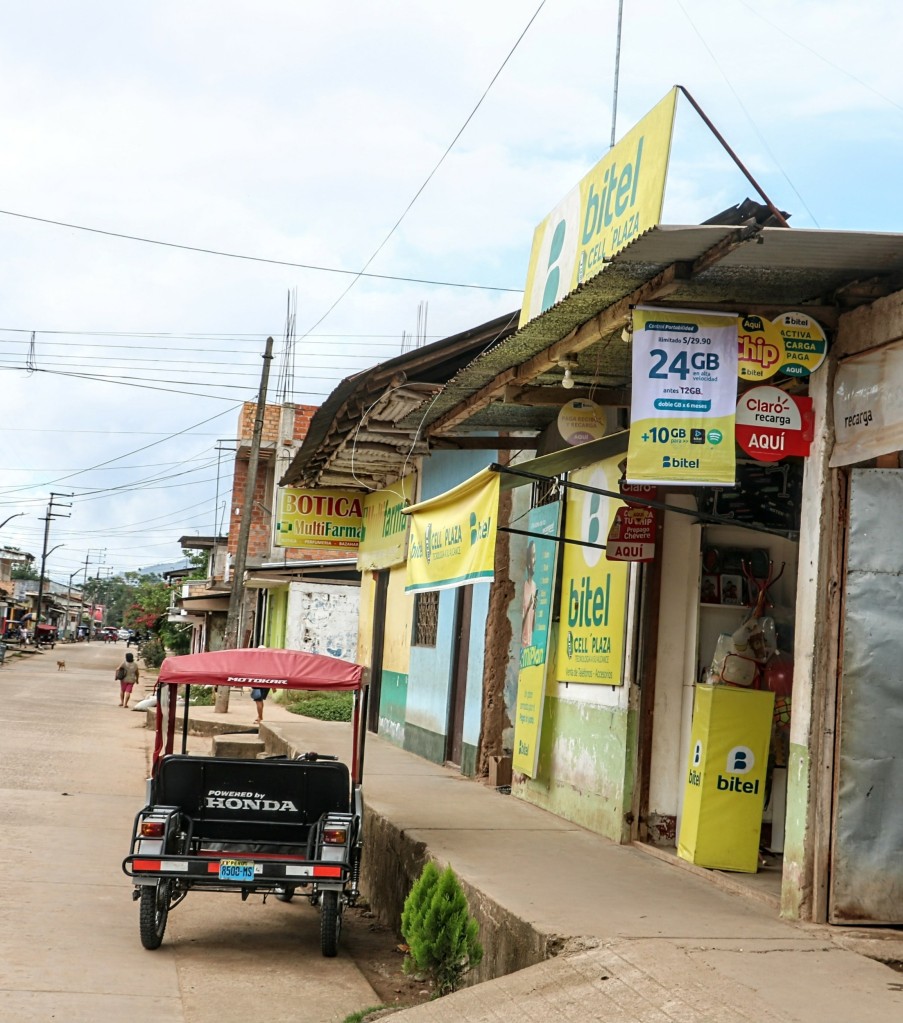
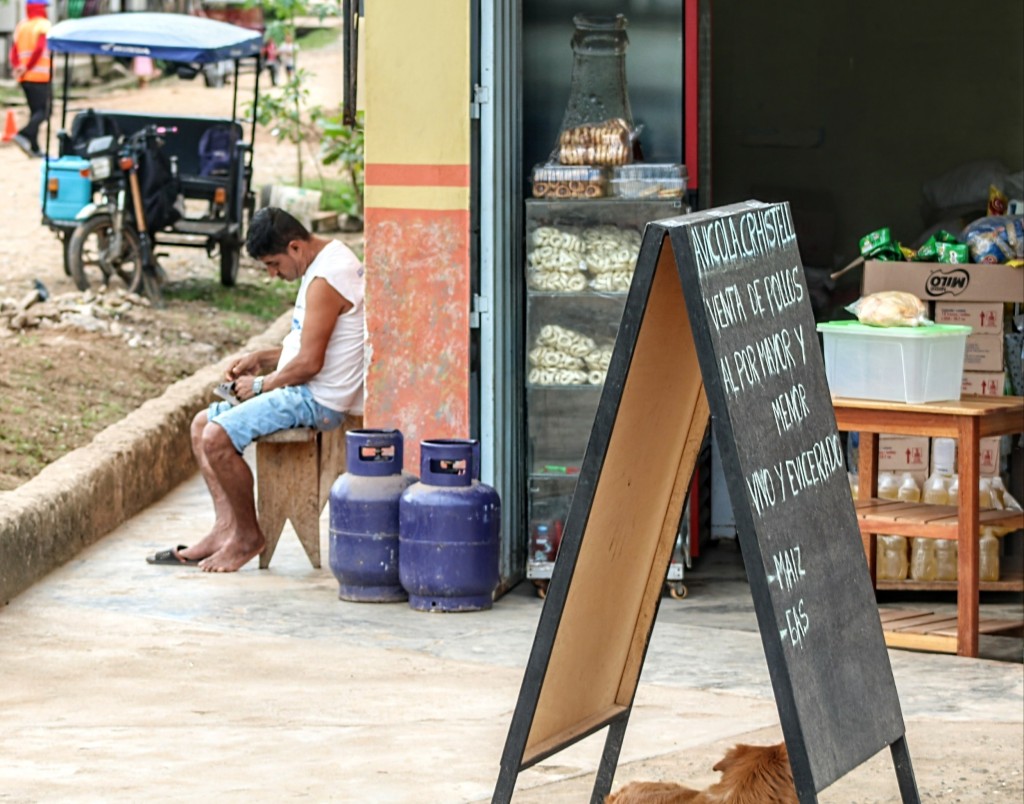







The town squares were ofen covered with coffee beans drying in the sun.

Down the road, Jose Manuel, was telling me about his routines. He was busy spreading out his coffee beans. It would take about three days for them to dry.

He thought I might be interested in weaving and invited me into his house where his sister was busy working.

Jorge Rengifo, also had his coffee drying in the sun and was spending some time with his mother sitting outside his house on the main town square of the village San Roque. He has five hectares of land. It takes him about an hour to walk uphill to his land. He works the land himself but gets ten or so people together to help at harvest time.

He had sacks of other crops he had harvested in his house. He let me try some bean looking grain. I can’t remember the name, and I have not seen them before. However, they certainly tasted good.

In another village, San Antonio, I met Karina del Castillo. She had been living in Lima, but was finding it difficult to make ends meet. Her husband decided to return to his home town with Karina and their two little girls to develop the family business of making artisanal wine.

While talking (and tasting) their wine, “Don Tafur” her children went in and out playing in the street, free of traffic. I asked her what she missed about Lima. Her answer was “nothing”. Here she had found peace and tranquility for herself and her family.

She was kind enough to send me these following photos showing the artisan process in action.

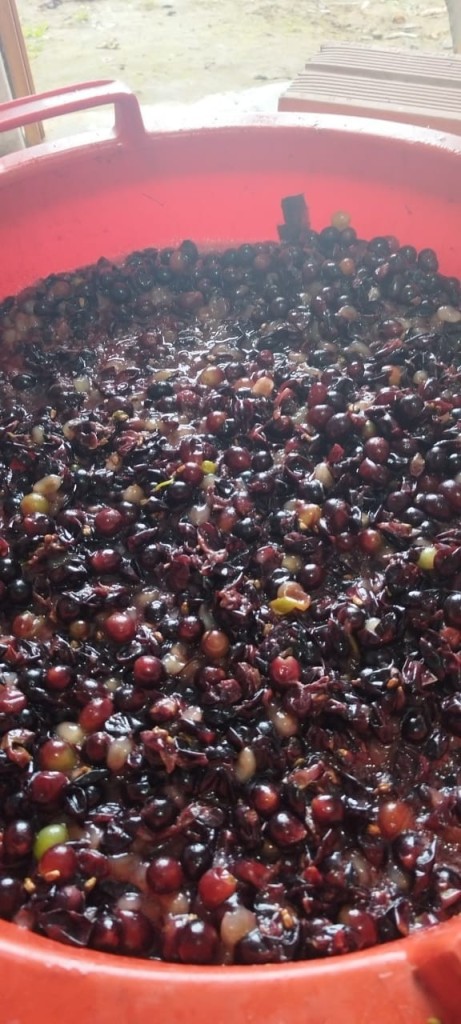
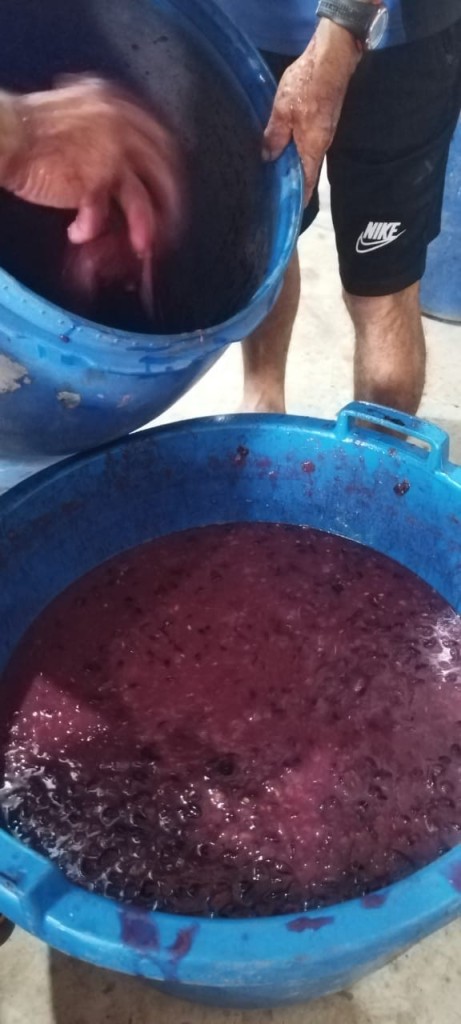

And her wine was pretty good as well. I bought a stock to bring home! “Salud” (Cheers – literally Good Health)
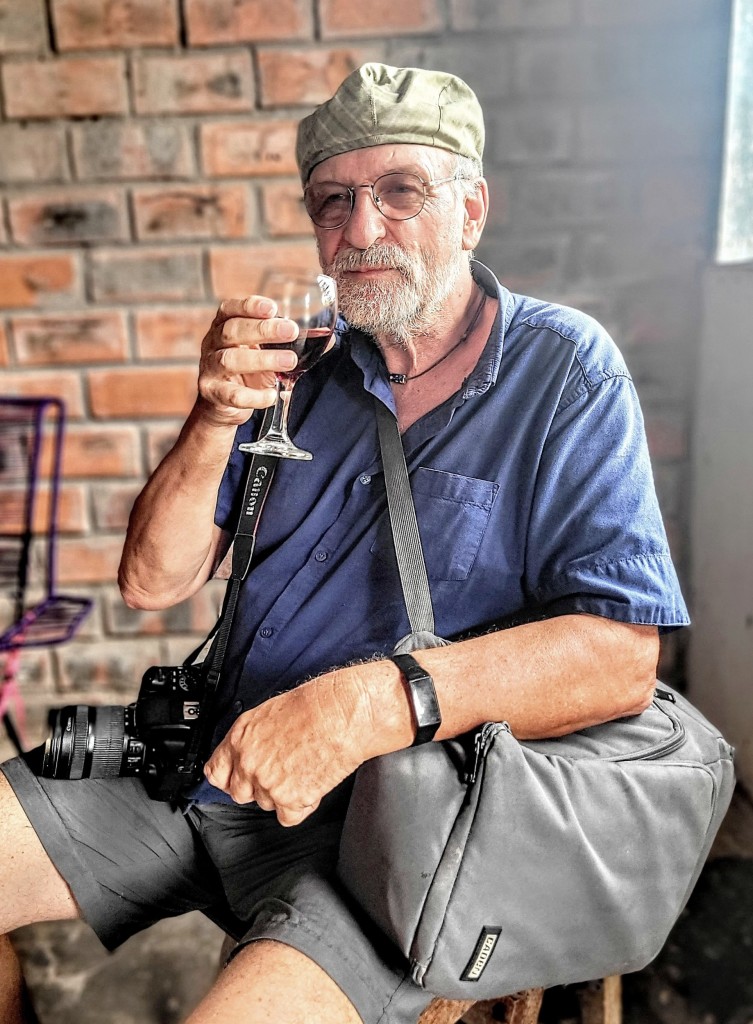
In another village, many of the local people were out in the street, cutting weeds and generally cleaning up the main square. Juan explained that their whole community was doing this together in preparation for the village celebration of their patron saint. I was invited to stay on for the celebrations, but time was against me.

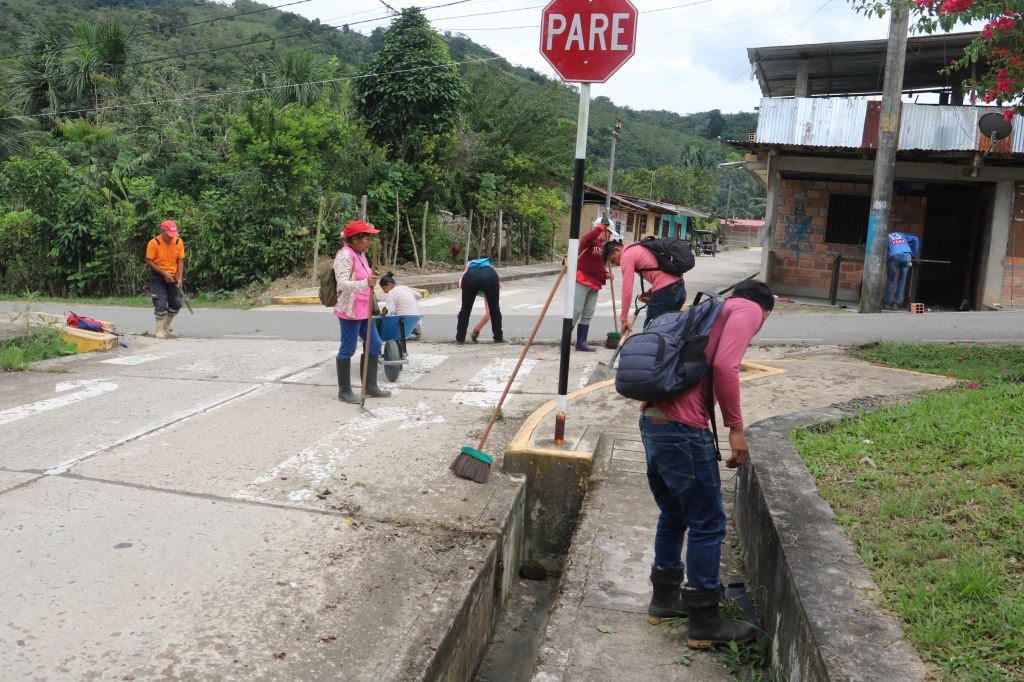
As I went to find Luis Alberto and the moto taxi, I met Vicente Sinorahus and his Vicuña.
He had come to the village especially for the coming celebration to take photos of the villagers and visitors attending this little festival.
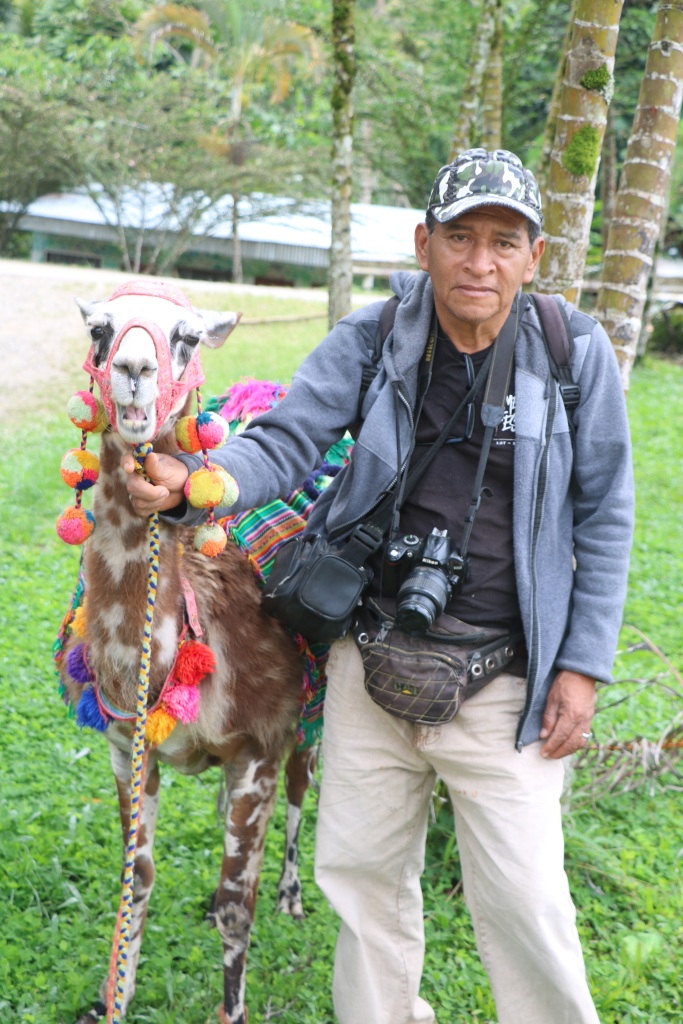
Vicente told me that he came from another village, but went to wherever there was an event, accompanied with “Azucar” (Sugar), his Vicuña. I was curious about how he travelled from place to place with Azucar. “Easy” he explained. He had his own moto-car and would load Azucar in the back of the tiny vehicle. That must be one very loyal and peaceful Vicuña to travel that way. Even my legs didn’t fit comfortably inside! And Vicuñas are pretty big amimals.
The Travelling Circus
In another village situated down the river Huallaga, I came across an itinerant travelling circus.

The Big Top was already set up and they were soon going to open to the public. Around the big top were other tents with double inflatable beds inside covered with sheets and clothes. It takes three days to set up the structure ready for the performance.


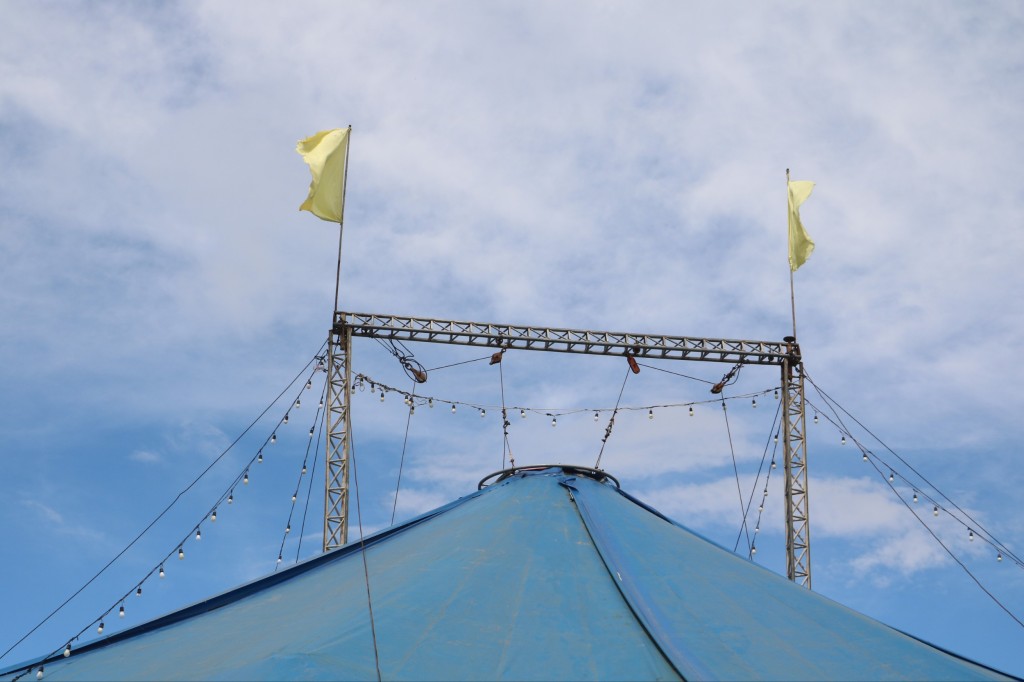

The owner of the Circus, the “Circo Royal Dumbar” was Isidro Luis Pisfil. He has been in the circus business since he was a child. And now, his children also perform different acts in the circus including high-wire acrobatics, and a very frightening wall of death with two motorbike speeding around in a tiny wire globe.

Luis was an acrobat, but now, being less agile than before, is known as “El Mago Luisin” (The Magician Luisin) He says that he used to have a pair of lions, but these were taken away as it was deemed cruel by the authorities to have performing wild animals. He said that he sadly misses his dear animals, and fears that his animals have since been killed.
All their equipment packs into a trailer, and the articulated lorry, travels from village to village. There is no direct itinerary, but they try if they can to arrive at places when they have local festivals.

Luis laments that the magic of the circus is now waining. People prefer to drink and go to the local hop for a dance. As such, in small villages, he only charges 5 soles for entry ($US 1.40).
While I was there, the artists were practising their craft and Luis was welding together some equipment.




His grandchildren were having some home schooling lessons while his wife cooked dinner for the troupe.
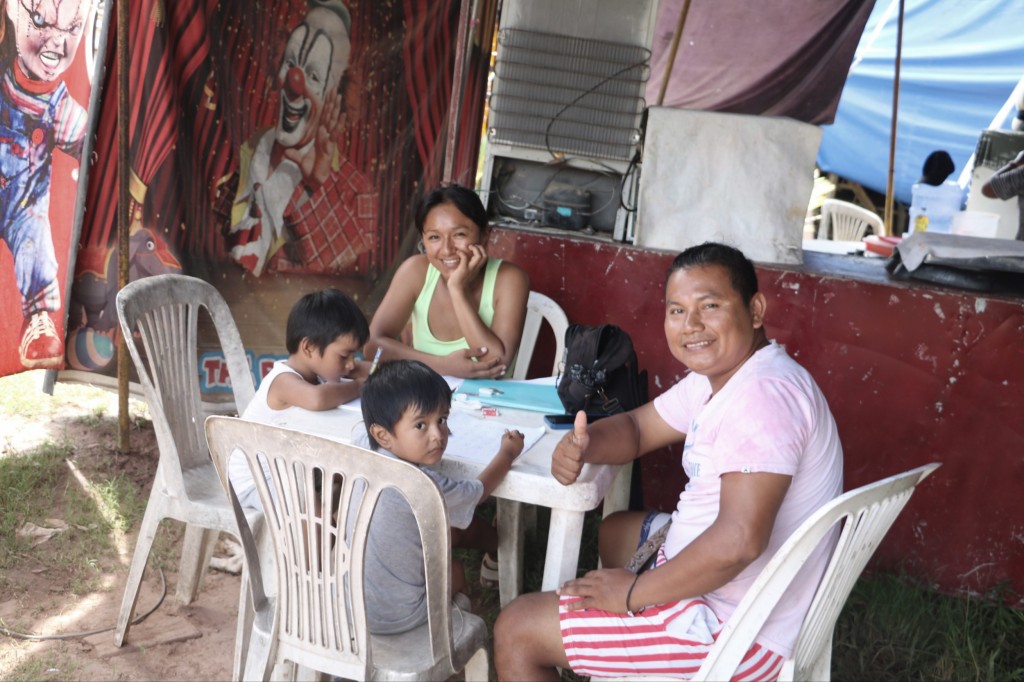

As I prepared to leave, one of his small grandchildren , about nine years old came up to see the photos on my camera. “And what do you do in the circus?” I asked. Me? she replied and proudly continued….. “I am a contortionist!”
When there are no more customers, they pack up and go on the the next village.
So, I wandered from village to village. There isn’t much in this post about Laguna Azul, nor the wonderful waterfalls. These are of course places of great beauty.

However on this trip I contented myself simply listening to the stories of these beautiful people who crossed my path…… not forgetting of course, Azucar the Vicuña

Other posts about Peru.
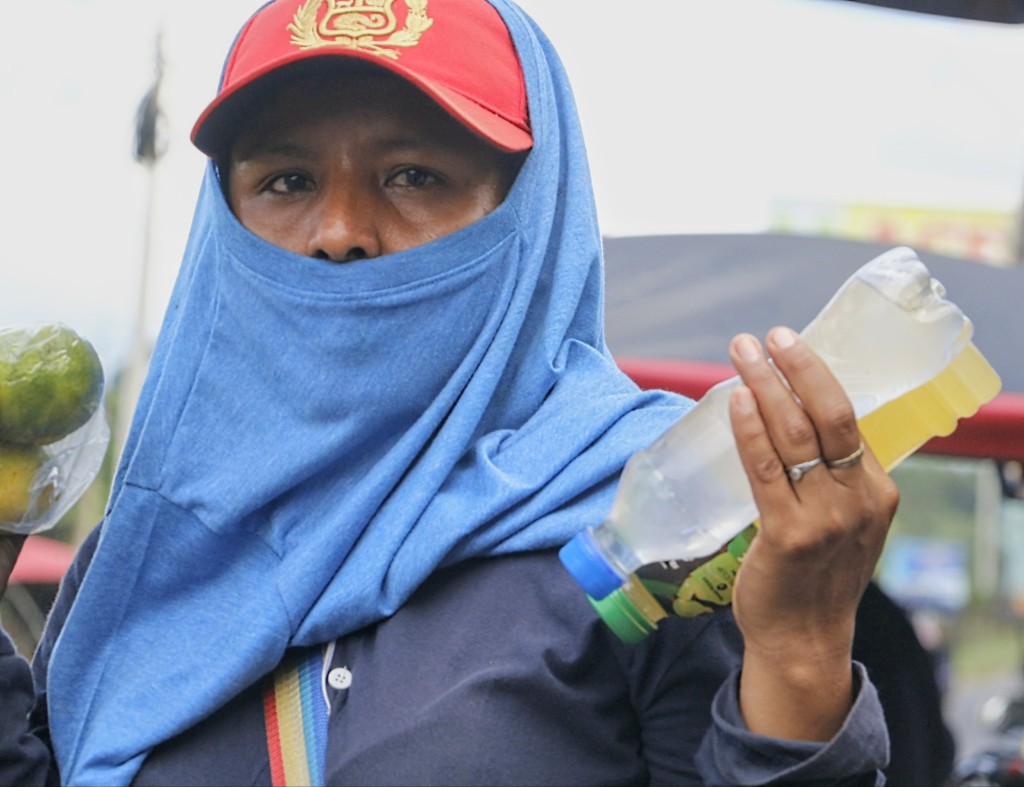
Leave a comment